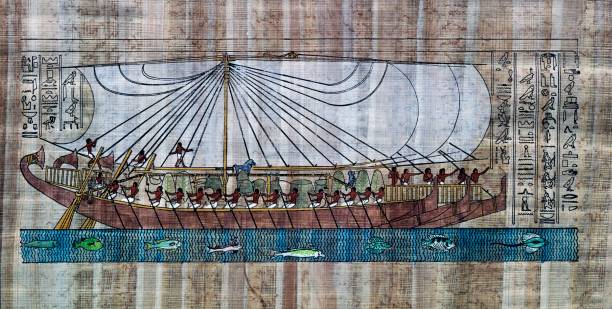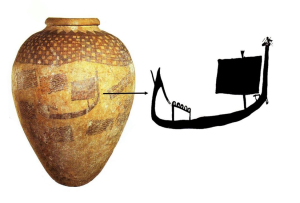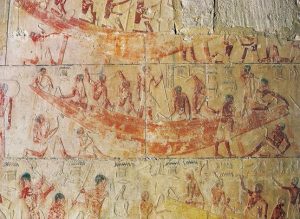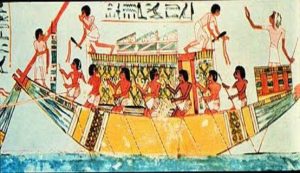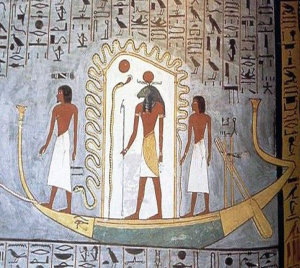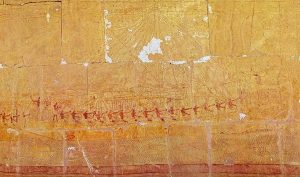Types of Ships in Ancient Egypt
The Nile River was the primary transportation route in Egypt. Ancient Egyptians traveled from one place to another via the Nile. Thus, one of the earliest industries known to the ancient Egyptians was shipbuilding. Even in pre-dynastic times, depictions of oars can be found on pottery from the Naqada I and Badari cultures. Ship types evolved from primitive vessels made of papyrus to sturdy wooden ships used for transporting goods.
The most important types of ships include:
Nile Ships These were small to medium-sized wooden ships propelled by oars. They were used for trade between cities and for domestic transportation. Seafaring Ships These were used for two purposes: trade and warfare. They were used for Mediterranean and Red Sea trade with Africa and Asia, as well as for transporting soldiers and equipment during wars. Religious Ships These were divided into two types: 1. human Ships: Used by individuals, whether kings or common people, for pilgrimages to Abydos, the main center of ancient Egyptian religion. It was believed that the god Osiris, the first ruler of the earth, was buried there. 2. Deity Ships: Used during the festivals of the gods to transport their statues from one temple or city to another. These ships were made of wood and gilded, and were kept within the sanctum sanctorum of the temple. They were never allowed to touch the water but were carried by priests to the dock connecting the temple to the Nile. In the Nile, other ships were prepared to carry the deity’s ship, which contained a golden statue of the god, on its journey to the residence of its consort. For example, Amun-Ra would sail from Karnak to his wife Mut at the Temple of Luxor. Or Horus would sail from Edfu to his beautiful wife Hathor at Dendera. Solar Barques: The ancient Egyptians revered the sun not only as a source of energy and light, but also because they believed that when it set in the evening, it illuminated the afterlife, the realm of the eternal. They often depicted the sun’s journey across the sky inside a vessel called the sun barques.
Famous Ancient Egyptian Trade Expeditions:
While not all woods were suitable for building seafaring vessels, they were well-suited for Nile boats. King Snefru sent a trade expedition to Lebanon to acquire the finest cedar wood, which was used not only for shipbuilding but also for making wooden coffins. During the Old Kingdom, particularly in the Fifth Dynasty under the reign of Sahure, Pepi I, and Pepi II, trade expeditions to Africa became prominent. The governors of Aswan were sent on trade missions to Africa to obtain gold, ebony, and ivory. They also brought back exotic goods such as perfumes, henna, and incense. Among the most famous of these travelers were the governors of Elephantine: Harkhuf, Sabni, and Mekhu. Interestingly, one of them once brought back a dwarf as a gift for the young King Pepi II, who was only six years old at the time, bringing great joy to the young king. One of the most famous trade expeditions in Egyptian history was that of the great Queen Hatshepsut (Eighteenth Dynasty, New Kingdom). She sent a large trade expedition to Africa, which brought back incense trees that were planted in front of her temple at Deir el-Bahri and Karnak Temple, as well as a vast quantity of perfumes, henna, and gold.
A vessel from the Naqada civilization, housed in the British Museum, bearing the shape of a boat
Shipbuilding on the walls of the tomb of Ti at Saqqara
Boats for transporting people
The procession of the god Amun-Ra on the walls of Hatshepsut’s temple
The barque of the god Ra from the tomb of Ramses I in the Valley of the Kings
One of Queen Hatshepsut’s trade expedition boats

